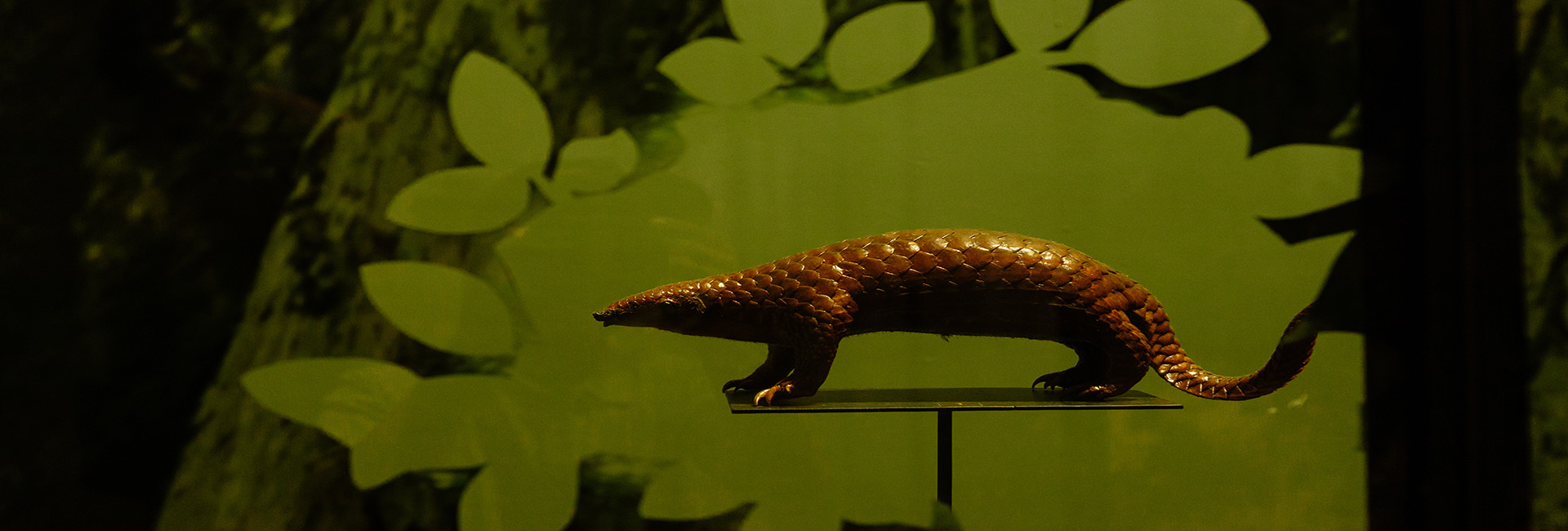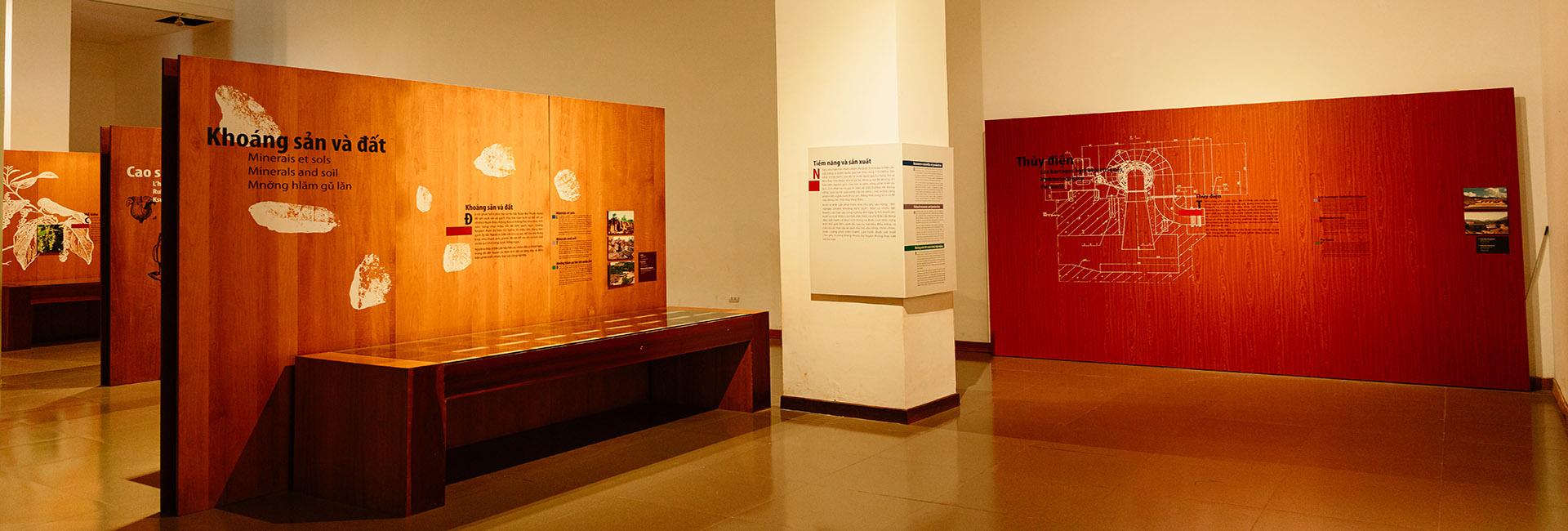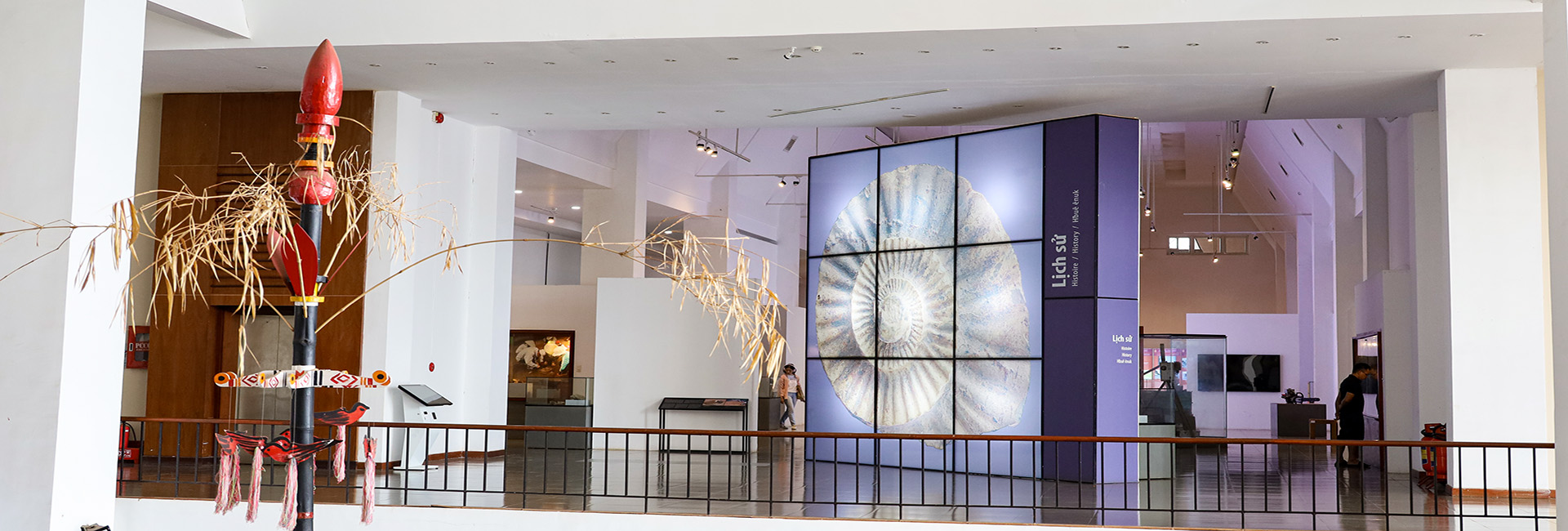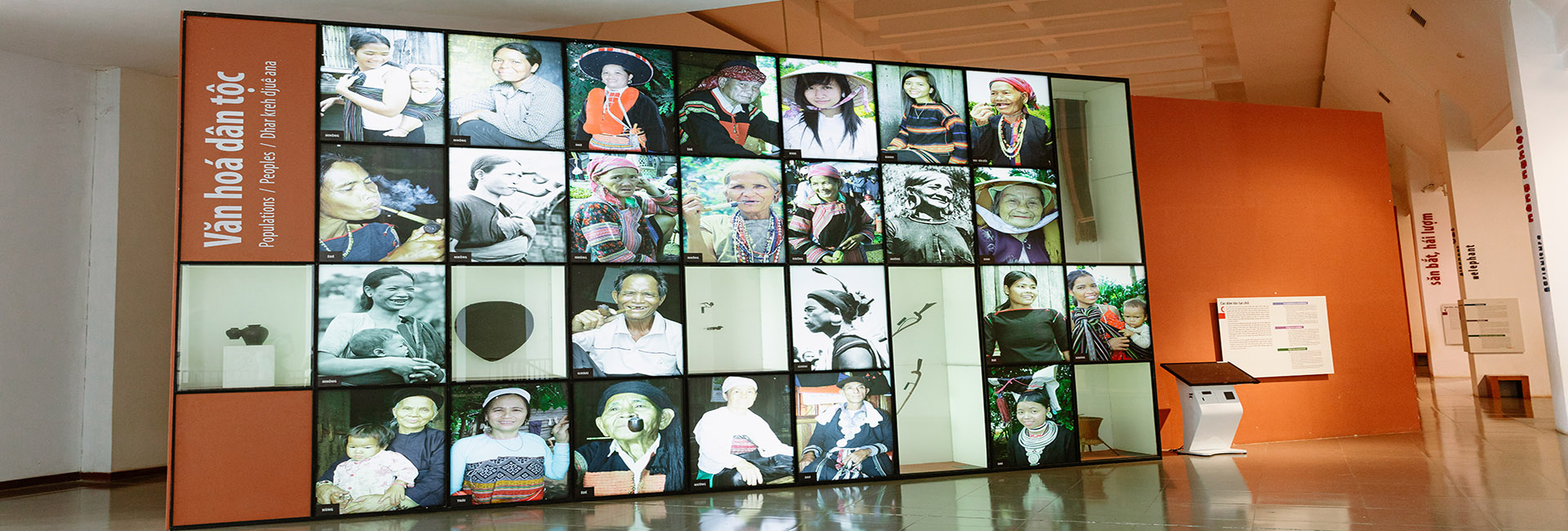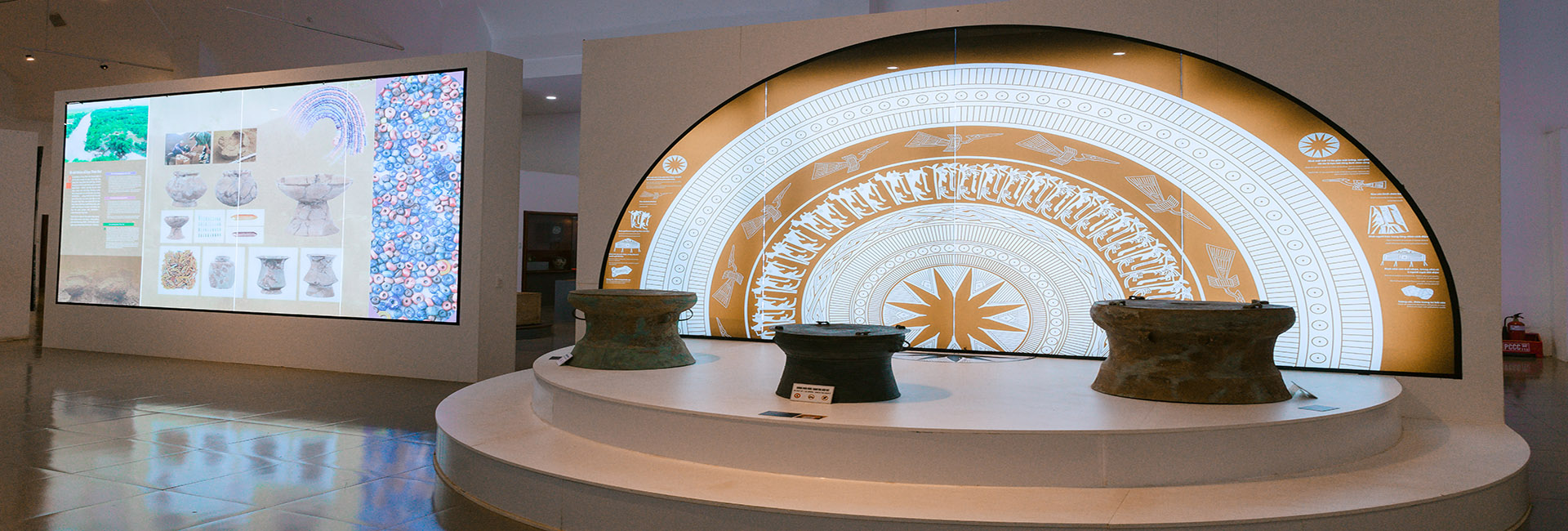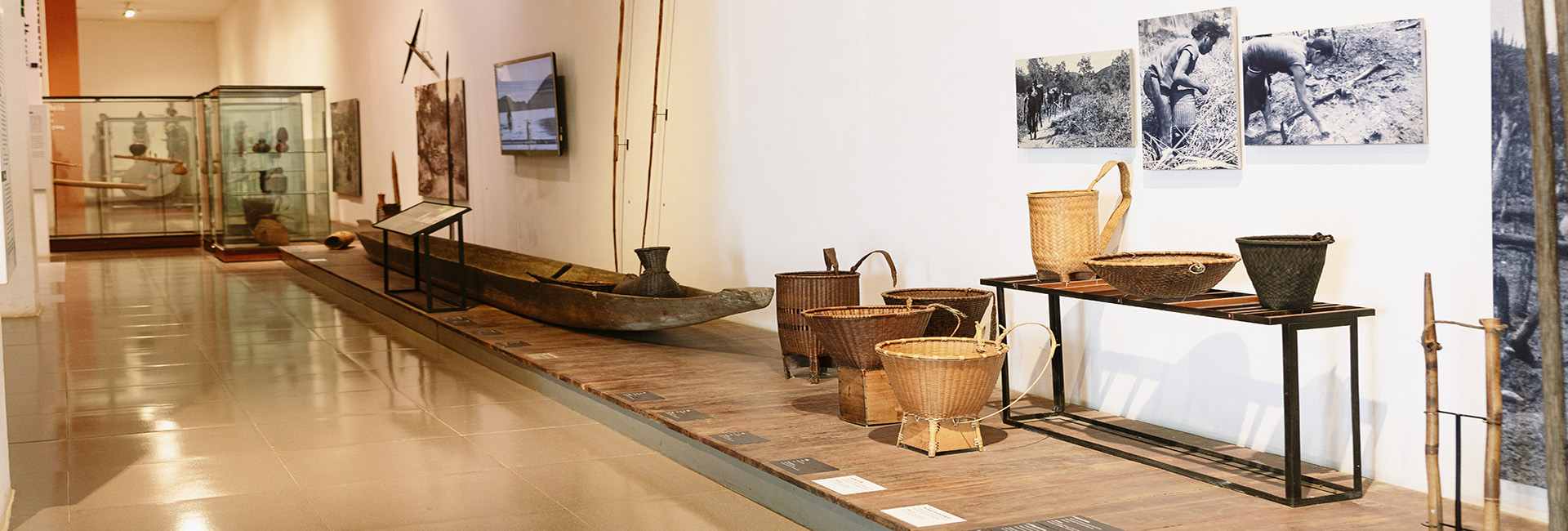THE EDE'S JARS OF “RƯỢU CẦN” – A KIND OF RICE WINE IN A JAR STUCK WITH A BAMBOO STEM
For the Ede, jar is one of the indispensable items in daily life and beliefs, considered as a symbol of wealth and strength of the family and clan. It is used as a wedding gift, a compensated object in a case according to customary law as well as a property divided for the dead.
In particular, the Ede do not make jars themselves but mainly exchange them with other ethnic groups such as Kinh, Cham, Lao, Cambodian... The exchangeable items for jars are usually pigs, cows, buffaloes, even elephants. The more valuable the jars, the more items exchanged.
The Ede often use various types of jars in different size, patterns and decoration. Each jar has its own name such as Tuk jar, Tang jar, Ba jar, Bo jar, Jan jar, Due jar. Tuk jar is considered the most sacred and precious, so it is worth many buffaloes or an elephant. The jar is often used in important ceremonies, kept in a secret place, where children are not allowed to come near and it should not be lent to others. With the view that "all things have spirit", the Ede often put rice in the Tuk jar to "feed it" while not being used.
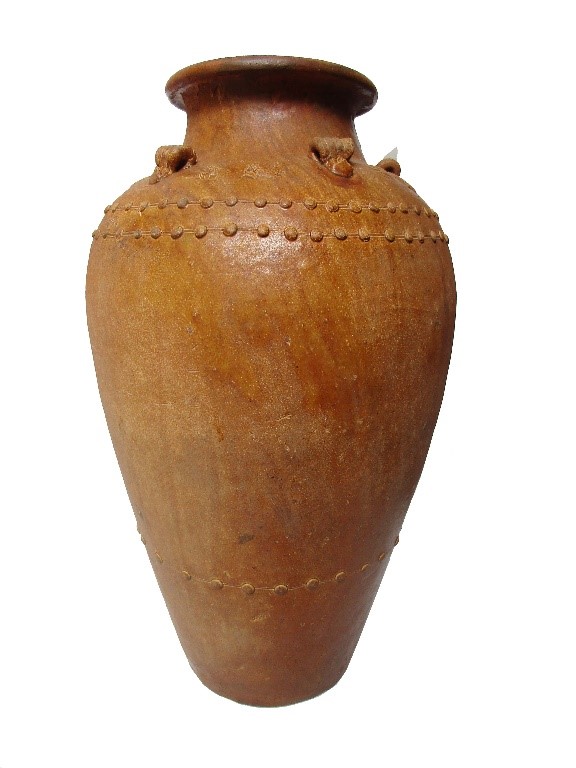
Tuk jar, one of the precious jars at Dak Lak Museum
According to the Ede's belief, the God (Yang) reside everywhere, and each "sacred" jar has a god or soul residing in it. When a precious jar is brought home, the family must hold a housewarming ceremony for the jar with the purpose of informing ancestors, relatives, and family members and welcoming the jar as a new member, praying that the jar will live long, healthy, happy, and in harmony with the family. During this ceremony, the blood of the sacrificed animal is smeared on the jar mouth, proving that this jar has the presence of a god. After that, the jar is brought into the house and carefully placed in the most solemn place and is only used on important occasions. On the contrary, when the owner wants to sell or give it away, she must hold a farewell ceremony to send off the jar before it goes to its new owner.
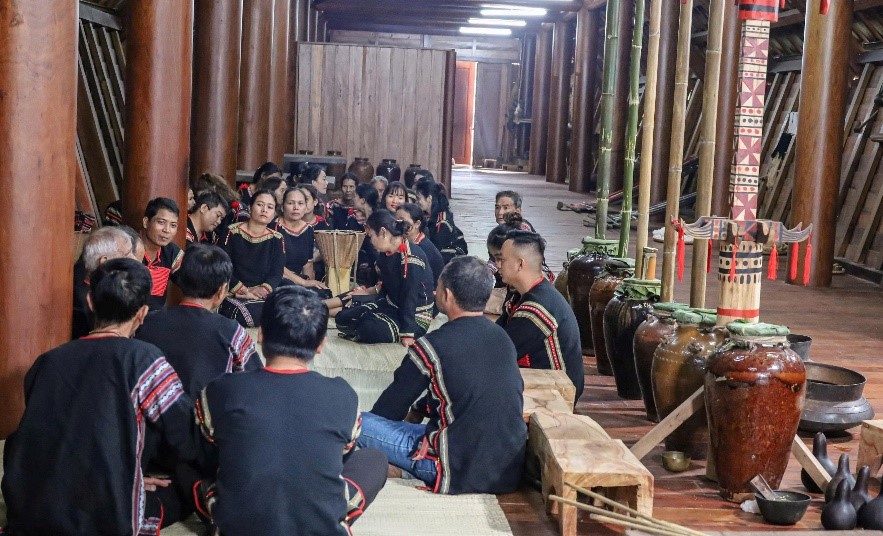
Jars in the Ede’s weddings
The jar is used to brew “rượu cần” – a kind of rice wine in a jar stuck with a bamboo stem to offer to the gods, or to entertain distinguished guests. Depending on the level of the rituals, the number of jars and sacrificed animals are regulated. With that meaning, the jars of “rượu cần” are closely associated with the Ede’s rituals of the life cycle and the community, from the ear-blowing ritual, the growing-up ritual, the wedding ritual to the new rice ritual, the water-wharf ritual, especially the tomb abandonment ritual - the most important ritual in the life cycle of a person. The jars have become a living cultural heritage, a link with the gods, a means of communication and community bonding.
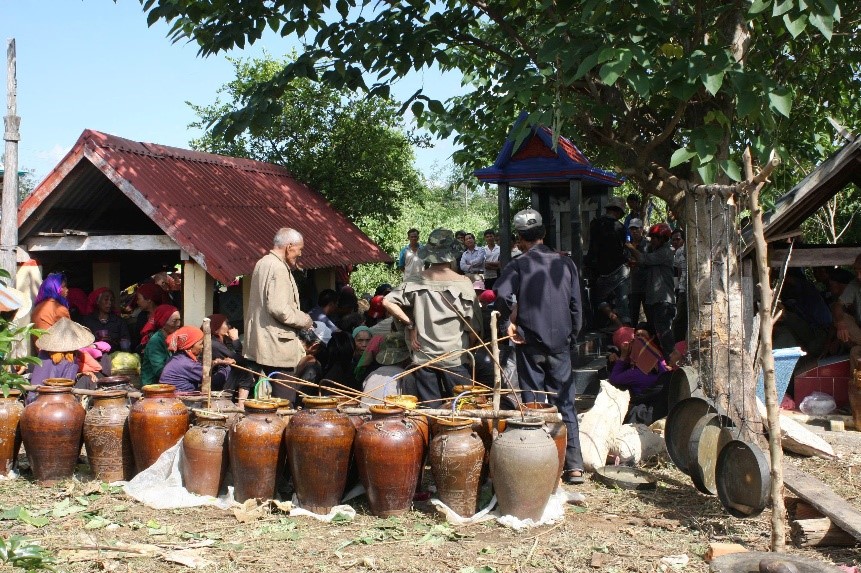
Jars of “rượu cần” are lined up in a long line in the tomb abandonment ritual
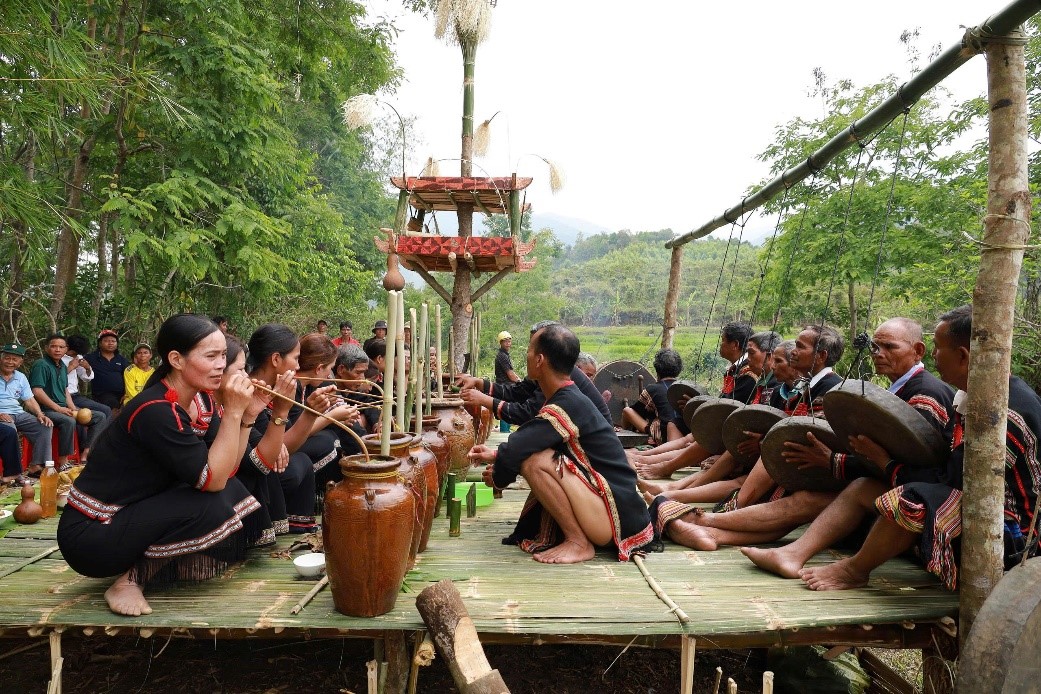
The Ede’s crop ritual
Nowadays, in the context of modern life, cultural exchange and acculturation have had a significant impact on the Ede’s cultural and spiritual life. The purchasing, selling, exchanging and using jars are no longer popular. However, in the Ede’s festivals and community activities, jars of “rượu cần” are indispensable. In local food courts or restaurants, nice jars of “rượu cần” are meaningful gifts for visitors from afar to buy as gifts for relatives and friends; jars appear in communal tourism activities, connecting tourists with local culture, with gongs or unique folk dances, which contribute to preserving and conserving the Ede’s fine traditional culture in particular and the Central Highlanders in general.
Y Dhiư Niê



